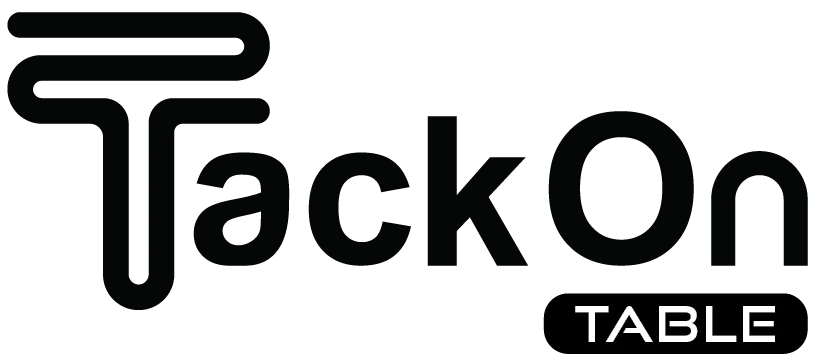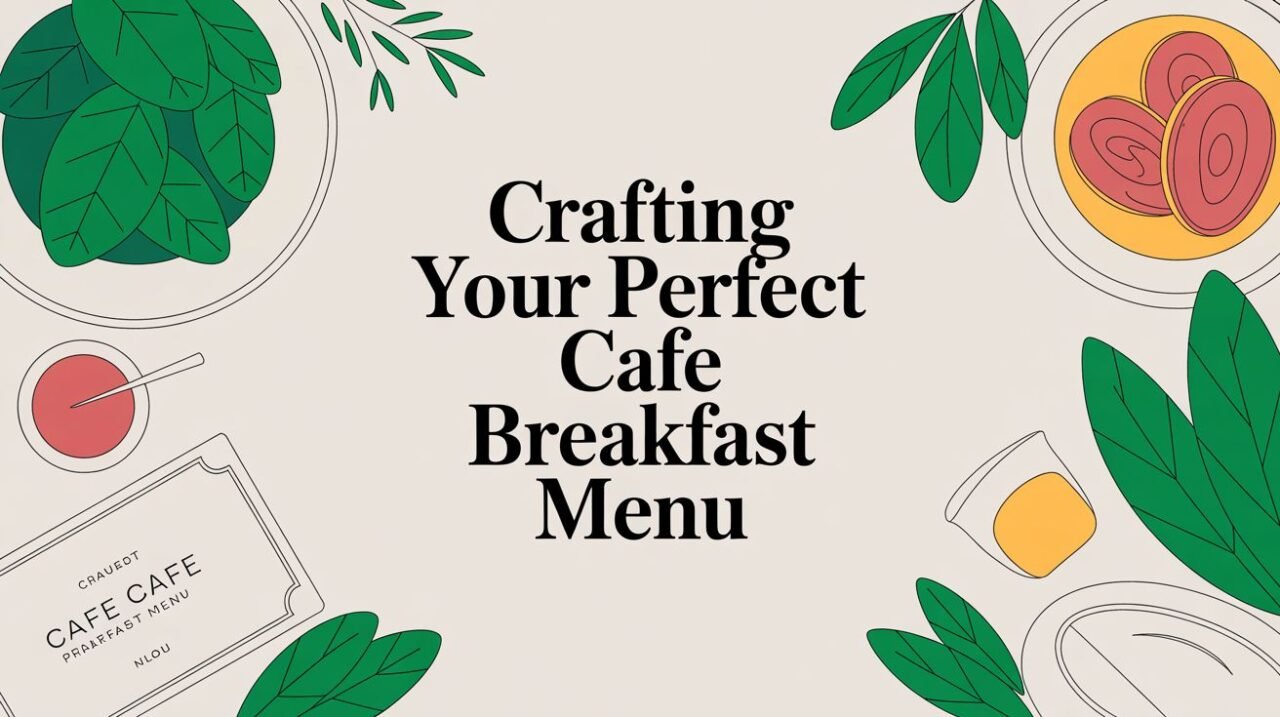Your breakfast menu isn't just a list of food. It's your cafe's handshake, its story, and the first impression you make on every customer. Get it right, and you create a loyal regular. Get it wrong, and they're just grabbing a coffee on their way somewhere else.
This guide provides a clear, solution-focused framework for building a breakfast menu that not only delights customers but also drives profitability, all backed by the right technology.
What's Your Cafe's Breakfast Vibe?
Before you even think about what kind of bacon to source, you need to define your cafe's core identity. This foundation dictates every decision that follows.
Are you the go-to spot for busy professionals needing a healthy, lightning-fast bite? Or are you the laid-back weekend brunch destination where families linger over pancakes? Trying to be both is a recipe for mediocrity. Pleasing everyone usually ends up pleasing no one.
This isn't just about picking a theme. Analyze your neighborhood. Is it saturated with greasy spoons, leaving a wide-open lane for fresh, nutrient-packed grain bowls and cold-pressed juices? Or does everyone serve the same old eggs benedict, creating an opportunity for you to introduce exciting global breakfast dishes?
Expert Tip: Your menu's success depends on having a crystal-clear identity. It's far better to be known for doing one thing exceptionally well than to be a forgettable jack-of-all-trades. That's how you build a loyal following.
Finding Your Edge in a Crowded Market
Let's be clear: the breakfast scene is competitive. The global market was valued at around $210 billion in 2025 and is expected to hit $255 billion by 2030. With that growth comes fierce competition.
The good news? Customer tastes are evolving, creating new opportunities. For instance, over 61% of consumers now look for functional foods and drinks for breakfast—items that promise an energy boost or better focus. This is a massive shift away from empty calories.
So, how do you stand out? You could carve out a niche by:
- Going Hyper-Local: Make a name for yourself by sourcing everything from nearby farms. A true farm-to-table menu tells a powerful story.
- Being Bold with Flavor: Introduce your customers to something they've never tried, like Turkish menemen or a killer shakshuka.
- Owning the Value Proposition: Focus on being the best-quality, most affordable breakfast in town. Sometimes, that’s the most compelling niche of all.
Use Your Tech to Test and Learn
Once you land on a concept, you need the right tools to bring it to life without friction. This is where modern, intuitive Café Management Software is non-negotiable. You can't afford to fight with clunky systems when you should be perfecting your menu.
A flexible platform like TackOn Table, known for its easy setup, lets you test ideas quickly. Think you've got a winning "energy-boosting smoothie"? Add it to the menu for the weekend. Want to try a "seasonal farmer's market frittata" special? A few clicks and it's live.
Our café management software is built for this kind of agility. It gives you the power to instantly update your offerings and, more importantly, track what’s actually selling. This lets you build your menu based on hard data, not just hunches, ensuring every item earns its spot and tells your brand's story perfectly.
Building a Menu That Sells Itself
You've nailed down your cafe's identity. Now comes the fun part: turning that vision into a menu that not only tastes great but also makes you money. A well-crafted breakfast menu is one of your most powerful sales tools. It should do more than just list what's available; it should guide customers, keep the kitchen running smoothly, and pad your bottom line.
Think of it less as a simple list and more as a curated experience. This starts with getting your categories right.
This visual guide perfectly illustrates how understanding your market flows directly into defining your concept, which in turn shapes the menu you build.
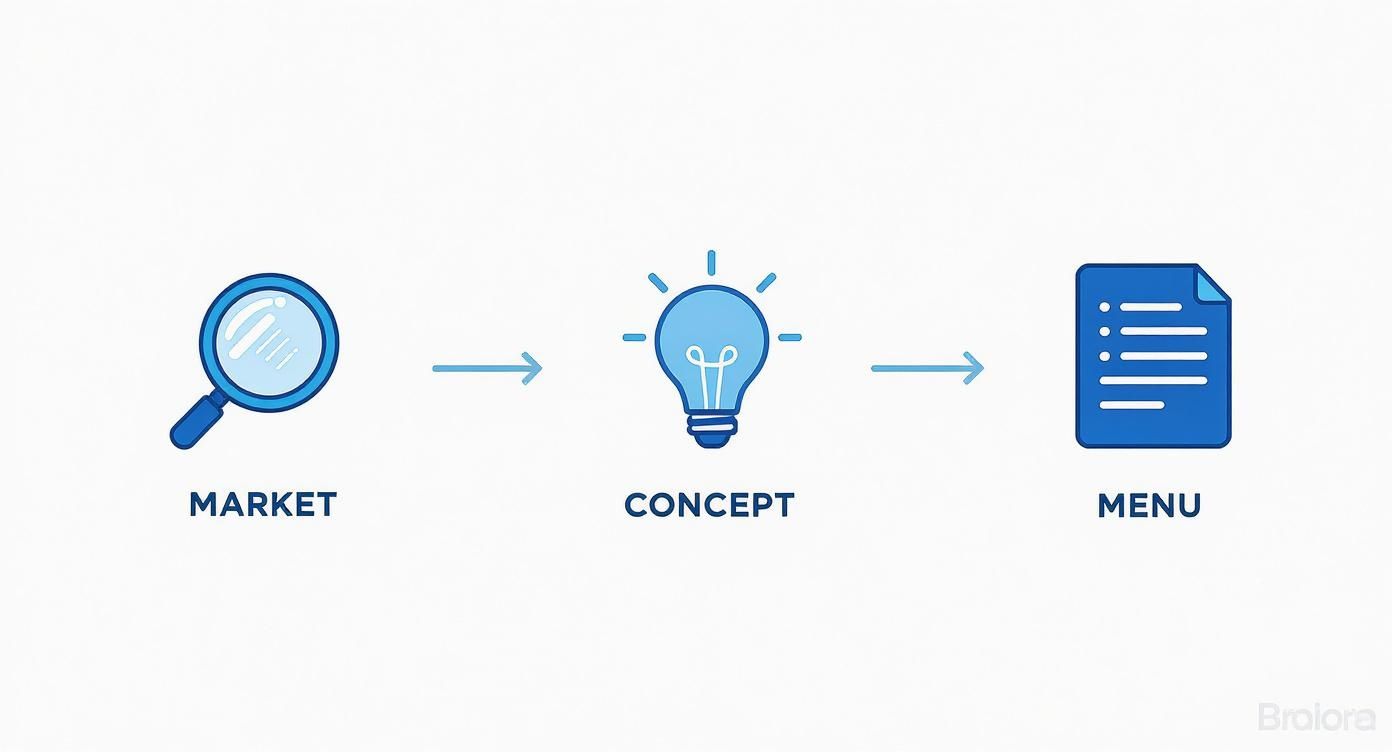
Each piece of the puzzle informs the next, making sure your final menu is a true reflection of your brand and what your customers are looking for.
Strategic Menu Categories
Ditch the generic "Breakfast" heading. Instead, break your menu down into compelling sections that tell a story and make it easy for people to find exactly what they're in the mood for.
Here are a few category ideas that work well in the real world:
- Signature Dishes: This is your hero section. Put your star players here—the unique, high-margin items you want to be known for. Think "Chef's Shakshuka" or "The Harbor House Benedict."
- Cafe Classics: You have to deliver on the essentials. This is where you put your perfectly executed staples like Avocado Toast, Buttermilk Pancakes, or a classic Bacon & Egg Roll. They're the reliable crowd-pleasers people expect.
- Light & Healthy: Capture the wellness-focused crowd with things like House-Made Granola Bowls, Fresh Fruit Parfaits, or a Smoked Salmon & Cream Cheese Bagel.
- Specialty Beverages: Your coffee and drink program is a profit powerhouse. Give it the spotlight it deserves with its own section for cold brew, specialty lattes, and fresh-pressed juices.
This kind of structure doesn't just make your menu easier to read; it’s a fundamental principle of menu engineering. You get to strategically place your most profitable items right where people will see them first.
Maximize Ingredient Versatility
A smart, profitable menu is built on a foundation of ingredients that can pull double or even triple duty. The secret to an efficient kitchen isn't a walk-in cooler stuffed with a million different things; it's using a core set of high-quality ingredients in creative ways across multiple dishes. This one move will slash your food waste and make inventory a breeze.
For instance, that case of avocados isn't just for your Signature Avo Toast. It can be sliced into a healthy grain bowl and even blended into a creamy breakfast smoothie. This approach ensures you squeeze every bit of value out of every ingredient you buy.
By selecting versatile ingredients, you not only reduce waste but also increase kitchen efficiency. When your cooks are working with a familiar set of core components, they can prepare dishes faster and more consistently, which is critical during a busy morning rush.
Design a Menu That Sells
The look and feel of your menu—both in print and online—matter just as much as the food itself. Simple design tricks can steer customer choices and boost sales of your highest-margin items. Try using callout boxes, small icons, or a slightly bolder font to draw the eye to your "Signature Dishes."
Modern café management software makes this whole process practically effortless. An all-in-one system like TackOn Table lets you update your menu everywhere at once—in-store tablets, your online ordering page, and QR code menus—with just a single click.
Need to 86 an item because you just ran out of salmon? It takes two seconds. Want to test a new "Weekend Special" and feature it at the top of the menu? You can build it out and place it front and center in an instant. This kind of agility is exactly what you need to run a modern, profitable cafe. As a leading Toast vs Clover alternative, TackOn Table gives you this powerful flexibility without the headaches or high costs, making it simple to build a menu that’s a win for your customers, your kitchen, and your business.
Ready to see how an intuitive POS can transform your menu management? Book a personalized demo to explore our features.
Mastering Menu Pricing and Food Cost
Figuring out what to charge for your breakfast items can feel like a real balancing act. If your prices are too high, you might scare people away. Too low, and you're practically giving away your profits. The secret to getting it right isn't guesswork; it's about digging into the numbers and building a smart, data-driven strategy.
It all boils down to understanding your food cost percentage for every single thing on your menu. This simple number is the foundation of a profitable cafe. It tells you exactly how much you're spending on ingredients for every dollar you make from a dish.
The Foundation: Calculating Food Costs
So, how do you find this magic number? You have to add up the cost of every single component that goes into a dish. Let's take a classic avocado toast: you'd account for the slice of bread, the portion of avocado, that sprinkle of everything bagel seasoning, and even the microgreens on top.
Once you have the total cost for one serving, you divide that by its menu price. A healthy target for most cafes is a food cost somewhere between 28% and 35%, but this can shift depending on your concept.
- Cost of Goods Sold (COGS): This is just the total cost of all the ingredients in a single dish.
- Menu Price: What you charge the customer at the till.
- The Formula: (COGS / Menu Price) x 100 = Your Food Cost Percentage
Now, this isn't a set-it-and-forget-it task. We all know how much ingredient prices can swing. One week, a case of avocados is a great deal; the next, the price skyrockets and eats right into your margin.
This is where a modern Restaurant POS with built-in inventory tracking becomes a lifesaver. Instead of wrestling with spreadsheets, a system like TackOn Table automates the heavy lifting with its all-in-one simplicity. It gives you a real-time look at how market prices are impacting the profitability of each dish. You can learn more about how a smart system simplifies your operations with our guide to restaurant inventory management.
Let's break down the cost for an avocado toast to see this in action.
Sample Food Cost Calculation for an Avocado Toast
This table shows a simplified breakdown of ingredient costs for a popular cafe item, helping us land on the right menu price to hit our target food cost.
| Ingredient | Cost Per Unit | Units Per Dish | Cost Per Dish | Menu Price | Food Cost % |
|---|---|---|---|---|---|
| Sourdough Bread | $0.20/slice | 1 slice | $0.20 | $11.00 | 29.5% |
| Avocado | $1.50/avocado | 0.5 avocado | $0.75 | ||
| Olive Oil | $0.05/tsp | 1 tsp | $0.05 | ||
| Seasoning | $0.02/gram | 3 grams | $0.06 | ||
| Microgreens | $0.15/gram | 2 grams | $0.30 | ||
| Total | $1.36 |
In this scenario, with a menu price of $11.00, our food cost percentage is a healthy 29.5%, which falls right within our target range.
Pricing Strategies Beyond the Markup
Just adding a standard markup to your food cost is a decent start, but the best operators use a more nuanced approach. You need to think about perceived value, what your local market looks like, and what your customers are willing to pay.
Lately, value and affordability have become huge factors. In 2025, major chains have seen massive growth by offering cost-effective breakfast options, which tells us that customers are more price-sensitive than ever. This is made even trickier by rising ingredient costs (like eggs), which has pushed many cafes to rethink their menus or add plant-based substitutes. You can dig deeper into these brunch and breakfast trends on Accio.com.
Your pricing strategy should be a direct reflection of your brand. A high-end cafe that sources everything locally from organic farms can justify higher prices. A spot that focuses on quick, grab-and-go service needs to be more competitive. Whatever your lane, be consistent.
Using Data to Boost Your Bottom Line
Your sales data is a goldmine, and a good Café Management Software is the tool you need to dig in. It does more than just take payments; it tells you the story of your menu's performance. This is often done by categorizing items into a simple matrix:
- Stars: These are your winners—popular and profitable. Feature them, promote them, and never take them off the menu.
- Puzzles: Profitable, but not selling well. Why not? Maybe they need a better description, a photo on the menu, or a staff recommendation.
- Plowhorses: Super popular, but with low profit margins. Can you re-engineer the recipe to lower the cost? Or could you bump the price by a small amount without anyone noticing?
- Dogs: Nobody's buying them, and they aren't making you money. It's probably time to let these go.
As a leading Toast vs Clover alternative, TackOn Table puts these powerful analytics right at your fingertips. Our reports are clear and easy to understand, showing you instantly which menu items are your moneymakers and which are dragging you down. This lets you make smart, surgical adjustments—like bundling a high-profit latte with a lower-margin muffin—to lift your overall profitability.
Ready to get a real handle on your menu's performance? Start your free trial today and see what a difference data-driven decisions can make for your cafe.
Designing a Kitchen Workflow That Works
A beautiful breakfast menu is a great start, but it's only half the battle. If your kitchen grinds to a halt during the morning rush, even the most perfect avocado toast will be ruined by a long wait. The real secret is in the execution—that’s what turns a good menu into a profitable, customer-pleasing machine.
You have to design your menu items not just for taste, but for speed of assembly. I can't stress this enough. Every second counts when you have a line of hungry customers. Think like an assembly line specialist and break down each dish into quick, repeatable steps.
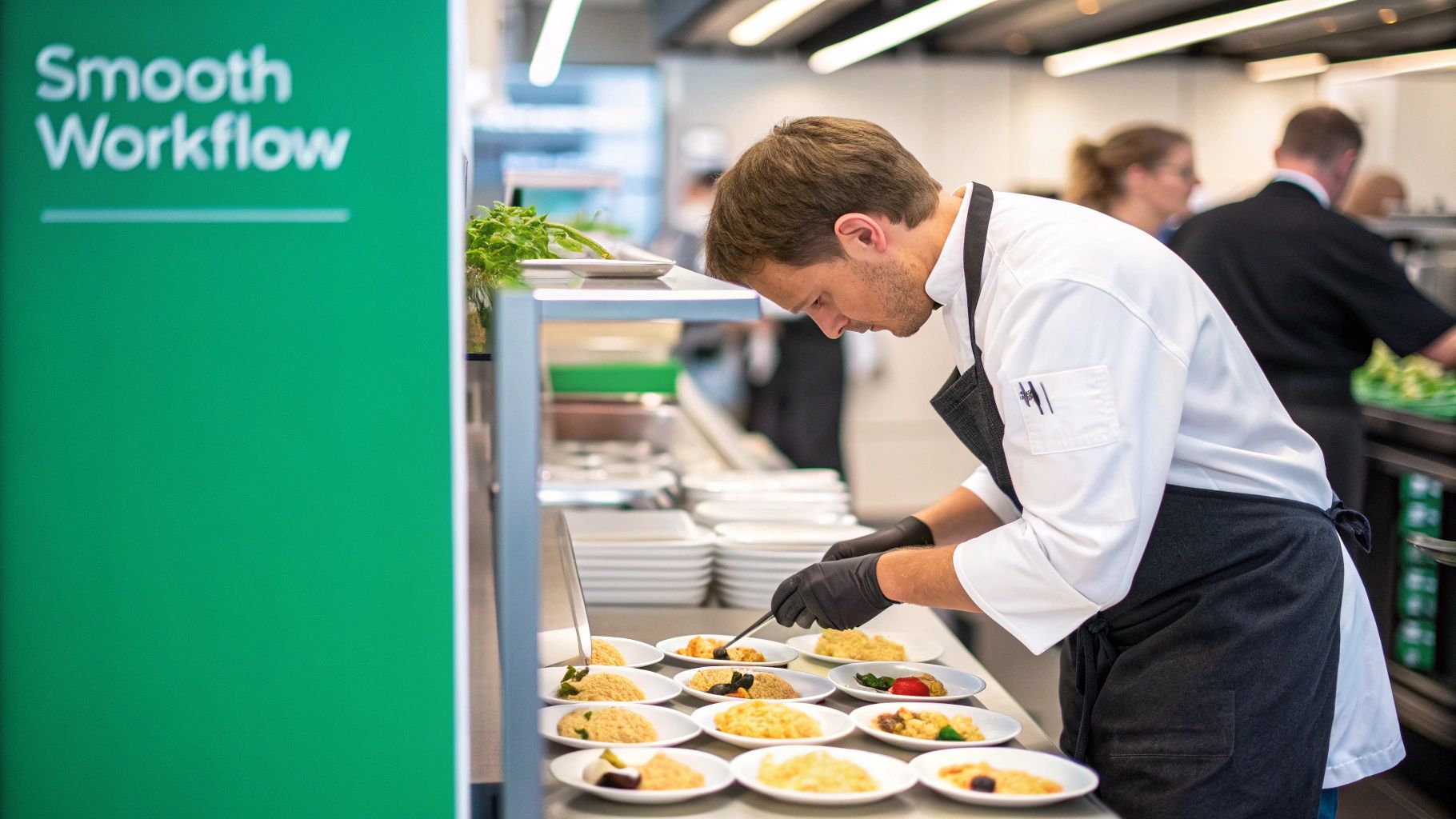
Building for Speed and Consistency
To truly own the breakfast rush, you need to remove friction from your cooking process. The best weapon you have is smart preparation before you even open the doors.
- Batch Prepping is Non-Negotiable: Sauces, dressings, and signature syrups should always be made in large batches during slower periods. Chopping veggies, portioning out bacon, and mixing pancake batter ahead of time frees up your line cooks to focus purely on cooking and plating during peak hours.
- Create Dedicated Assembly Stations: Don't have your cooks running all over the kitchen. Set up logical stations for your most popular items. For example, a dedicated "Toast & Bowl Station" with pre-sliced bread, smashed avocado, and all your toppings and granola within arm's reach can dramatically cut down ticket times.
- Standardize Every Recipe: This is crucial for consistency. Every single dish should be documented with precise measurements and clear steps. This ensures the "Signature Benedict" tastes just as amazing on a Tuesday when your head chef is off as it does on a packed Saturday morning. That's how you build trust and get people coming back.
The Technology That Ties It All Together
Prep and organization are your foundation, but modern tech is the glue that holds a high-volume kitchen together. Handwritten tickets get lost, shouted orders get misheard, and chaos quickly takes over. This is where a Kitchen Display System (KDS) becomes your best friend.
A KDS integrated with your POS system eliminates the communication gap between the front and back of house. Orders appear instantly on a screen in the kitchen, perfectly organized, timed, and even color-coded for urgency. This clarity slashes order errors and dramatically improves ticket times.
Instead of a server running a paper ticket to the kitchen, a mobile POS like TackOn Table allows them to fire orders directly from the tableside. The moment they hit "send," the order is on the KDS screen, and your kitchen team can get started. This simple change shaves precious minutes off every single order, which adds up to happier customers and more table turns throughout the morning.
For a deeper dive, you can learn more about how to streamline your kitchen with our guide to Kitchen Display Systems.
A Smarter Workflow with a Mobile POS
Picture this: a server takes an order for a customized omelet on a handheld device. They tap in the modifiers—extra cheese, no onions, side of fruit—and the ticket instantly appears on the KDS with every detail perfectly clear. There’s zero room for misinterpretation.
This is the power of a fully integrated system. TackOn Table’s easy setup and mobile-first design mean your staff can get up and running in no time, sending clear, accurate orders that keep the kitchen flowing smoothly. The result? A calmer kitchen, faster service, and a breakfast experience that feels completely effortless to your guests. That's how you build a reputation as the reliable, go-to spot for a great morning meal.
Ready to see how an integrated system can transform your kitchen’s efficiency? Book a demo and discover how TackOn Table can help you serve more customers, faster.
Using Your Restaurant POS to Drive Menu Performance
Think of your Point of Sale (POS) system as the nerve center for your breakfast menu, not just a high-tech cash register. Treating it as anything less is a massive missed opportunity. A modern Restaurant POS should be your command center for managing every item you sell, turning raw sales numbers into real-world decisions that actually grow your bottom line.
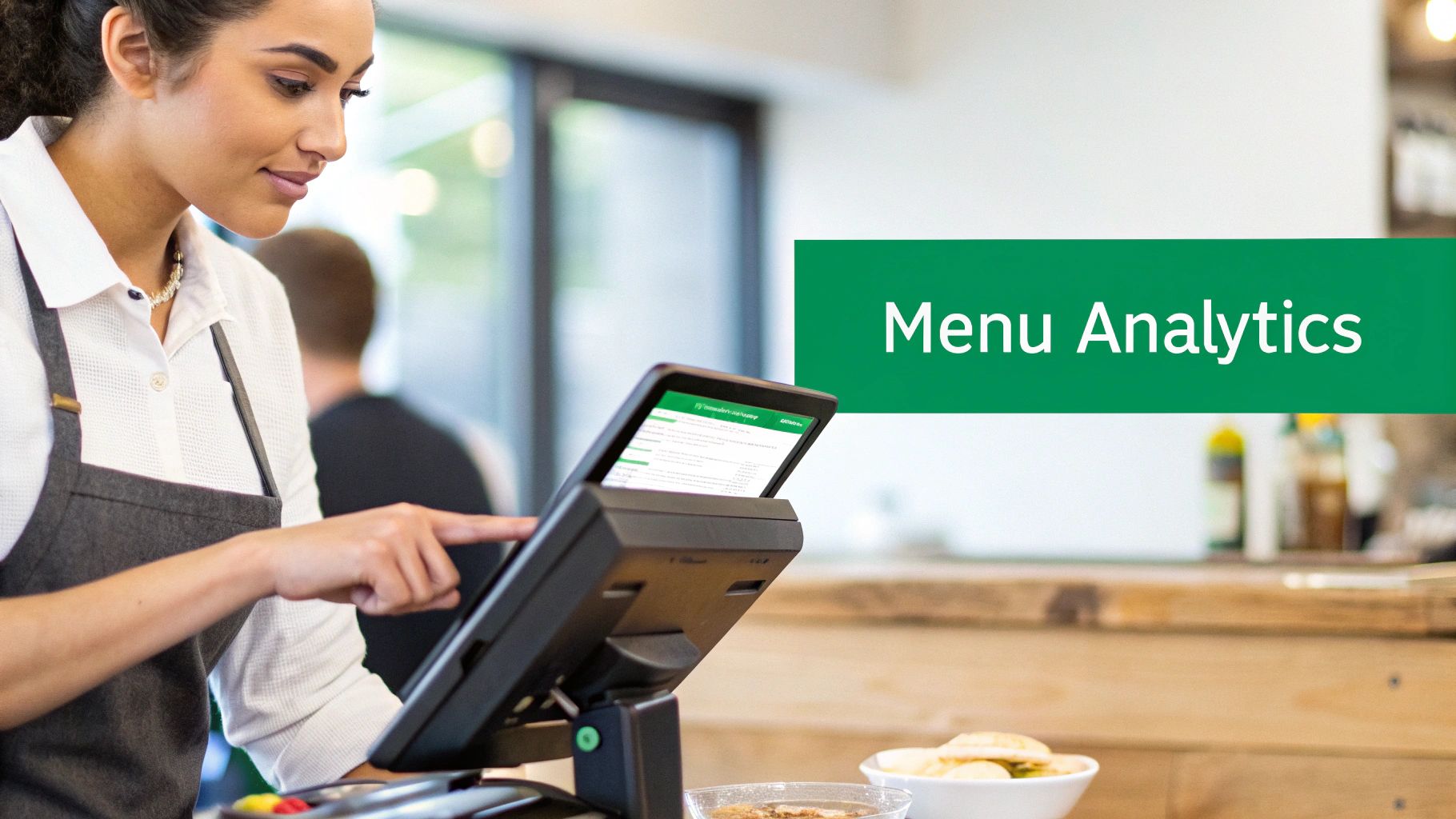
This shift in mindset is more important than ever. You're not just competing with the cafe down the street; you're up against your customers' own kitchens. Recent studies show that about half of people are eating breakfast at home more often to save money. This means your menu has to work harder to prove its worth.
Menu Management Made Simple
Your breakfast menu should never be static. A great POS system turns it into a living document you can change in seconds. This kind of agility is a huge advantage offered by systems like TackOn Table, which really stands out as a top Toast vs Clover alternative because of its all-in-one simplicity.
So, what does this look like in practice? Imagine your produce supplier gives you a great deal on local strawberries. With a few quick taps on your tablet, you can:
- Add a "Seasonal Strawberry French Toast" special to your digital menu.
- Create smart modifiers for other items, like adding fresh strawberries to pancakes for a small upcharge.
- Push the update instantly across every device, from your front counter to your online ordering page.
This level of control, all managed from one place, lets you jump on inventory opportunities, test new ideas without much risk, and keep things fresh for your regulars.
Unlocking Actionable Sales Insights
Beyond simple edits, the real magic of a modern Café Management Software is in the reporting. Your sales data holds the answers to your most pressing questions: What’s selling? When is it selling? And who is buying it?
Instead of just going with your gut, you can pull a report and see exactly which dishes are your profit powerhouses and which ones are just dead weight. A good system makes this data incredibly easy to read.
Key Takeaway: Stop guessing and start measuring. A powerful POS turns sales data into a clear roadmap. It shows you which menu items to promote, which to re-engineer for better profitability, and which to cut entirely.
For example, your data might reveal that your "Sunrise Breakfast Burrito" is a bestseller but has a razor-thin profit margin. With that insight, you can start looking for a more cost-effective sausage supplier or try bundling it with a high-margin specialty coffee to boost the overall ticket value.
Data-Driven Promotions and Upsells
Your analytics can also show you the natural rhythm of your business. Let's say your reports clearly show a slow period between 9:30 AM and 11:00 AM every weekday. That’s not a problem; it’s an opportunity.
You can use your POS to create and launch a targeted promotion, like a "Morning Boost Combo" with a coffee and a pastry at a special price, available only during those hours.
TackOn Table’s intuitive platform lets you program these kinds of promotions in advance so they apply automatically. You can then track their performance in real-time to see if the special is actually bringing more people in during that slow window. Better yet, our mobile POS allows your staff to prompt upsells right at the table—suggesting that extra shot of espresso or a side of avocado—that boost check sizes one order at a time.
This proactive approach, powered by a simple yet powerful system, transforms your POS from a passive tool into an active partner in growing your business.
Ready to see how an intuitive POS can turn your menu data into real profit? Start your free trial today and see what a difference TackOn Table can make.
Don't Just Set It and Forget It: Keeping Your Menu Fresh
Launching your breakfast menu is a huge milestone, but it’s really just the starting line. The secret to long-term success is to think of your menu as a living, breathing part of your cafe. The best ones are always evolving, adapting to what’s in season, listening to what your regulars are saying, and—most importantly—paying close attention to the sales data.
This constant process of tweaking and refining is what keeps your menu exciting and profitable.
To pull this off without pulling your hair out, you need a system that can keep up. That's where a modern POS like TackOn Table comes in. Its all-in-one simplicity means menu updates are a breeze, not a weekend-long project. Need to add a special for the farmer's market crowd or adjust pricing across all your locations? Our multi-location control lets you push those changes live from one dashboard in minutes. In this business, that kind of agility is everything.
A menu should never be a static document. I've seen it time and again: small, data-driven adjustments consistently outperform a "set it and forget it" strategy. The result is always better margins and happier customers.
As a top Toast vs Clover alternative, TackOn Table gives you the powerful analytics you need, but in a way that actually makes sense. Our reports clearly show what’s selling and what’s sitting, helping you make smart decisions every single day. This is how you build a breakfast menu that doesn't just bring people in the door, but actively drives your cafe's growth.
Ready to build a smarter, more profitable breakfast menu? Book a personalized demo and see for yourself how TackOn Table can make a real difference in your cafe.
Answering Your Top Cafe Breakfast Menu Questions
When you're in the weeds of running a cafe, a few common questions always seem to pop up about the breakfast menu. Let's tackle some of the big ones I hear from operators all the time.
How Often Should I Really Be Changing My Menu?
Think seasons, not years. A full-blown menu redesign is a huge undertaking, something you'll likely only need to do every 12 to 18 months. But smaller, seasonal tweaks are where you can really shine.
A quarterly refresh is a great rhythm to get into. This could be as simple as adding pumpkin spice pancakes in the fall or a fresh berry parfait when summer hits. The key is to let your sales data do the talking. Dive into your Restaurant POS reports to see what’s actually selling. If the cost of avocados skyrockets but your avo-toast is a top seller, maybe you adjust the price slightly instead of yanking it. A flexible system, like TackOn Table, is built for this, letting you make these little changes on the fly without a headache.
What are the Real Money-Makers on a Breakfast Menu?
Your most profitable items are almost always the ones with low-cost, high-volume ingredients. Coffee, tea, and house-made pastries are classic examples—they cost pennies to make and have great margins. The same goes for things like oatmeal, pancakes, and classic egg plates.
But a menu full of only high-margin basics can be a bit boring. The smart play is to balance these workhorses with a few signature, higher-cost items that draw people in—think a fancy eggs benedict or a loaded breakfast burrito. Then, use menu engineering to strategically place your most profitable dishes where customers' eyes will land first.
Your POS analytics are your secret weapon. They’ll point out your "Stars"—the items that are both popular and highly profitable. That's what you want to push.
How Can I Handle All These Dietary Restrictions?
It's easier than you think if you start smart. Offering gluten-free bread, a few plant-based milks, and maybe a vegan sausage patty are simple swaps that open your doors to a much wider audience. The most important part? Labeling everything clearly on the menu.
This is where a solid Café Management Software becomes non-negotiable. Good modifier options let your servers easily communicate "no cheese" or "sub almond milk" to the kitchen, which cuts down on mistakes and shows customers you take their needs seriously. You could even group these options into a "Plant-Based & Gluten-Friendly" section to make it a no-brainer for guests.
What's the Best Way to Try Out New Menu Items?
Don't bet the farm on a brand-new menu. The best way to test the waters is by running new dishes as a "Weekend Special" or "Chef's Feature." It builds buzz and lets you get honest feedback from paying customers without the risk of a total flop.
Track how well the special sells right in your POS. If it flies out of the kitchen all weekend, you've got a validated winner to add to the permanent menu. An agile system is crucial here. As a leading Toast vs Clover alternative, TackOn Table makes it simple to add and remove these temporary items, so you can keep experimenting without messing up your whole workflow.
Ready to take control of your menu and see what it can really do for your bottom line? TackOn Table gives you a simple, all-in-one platform to manage your items, see what's working, and adapt to your customers' tastes in minutes.
Book a personalized demo and see for yourself how our features can transform your cafe.
